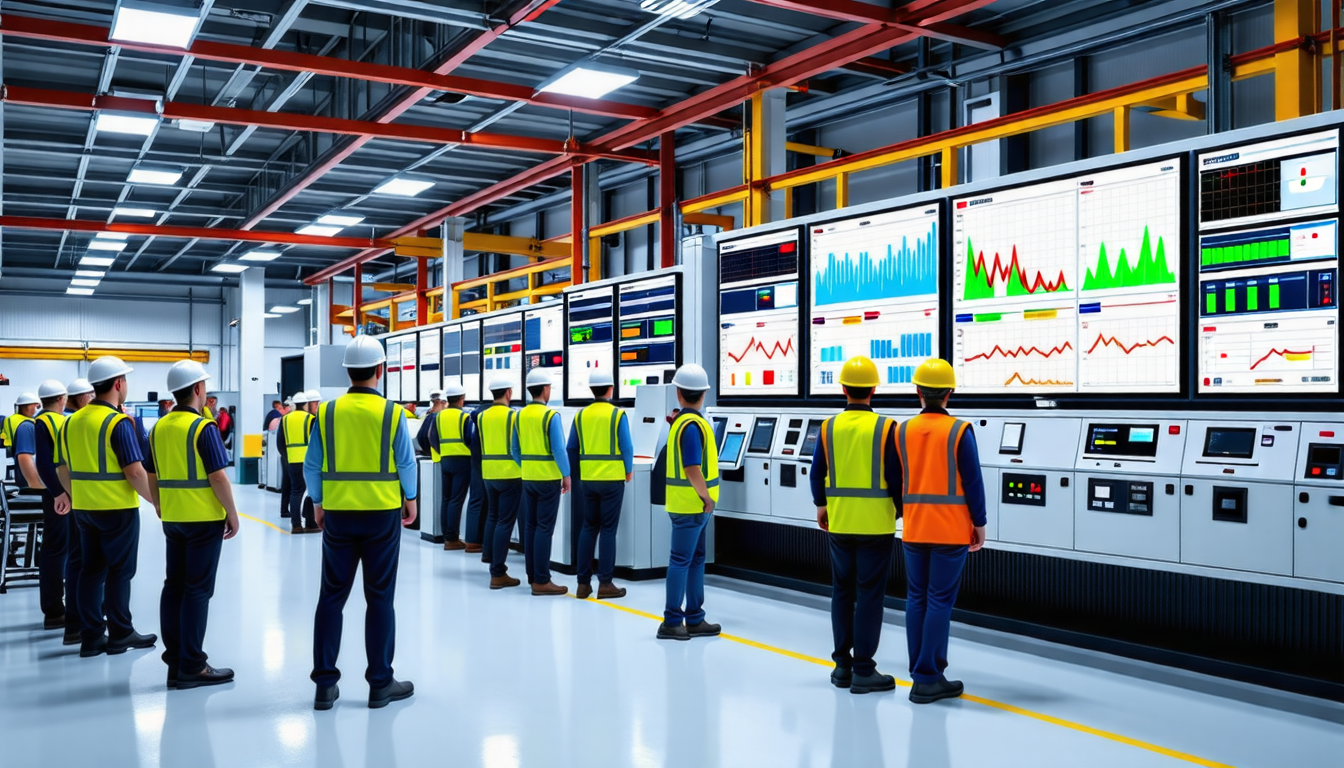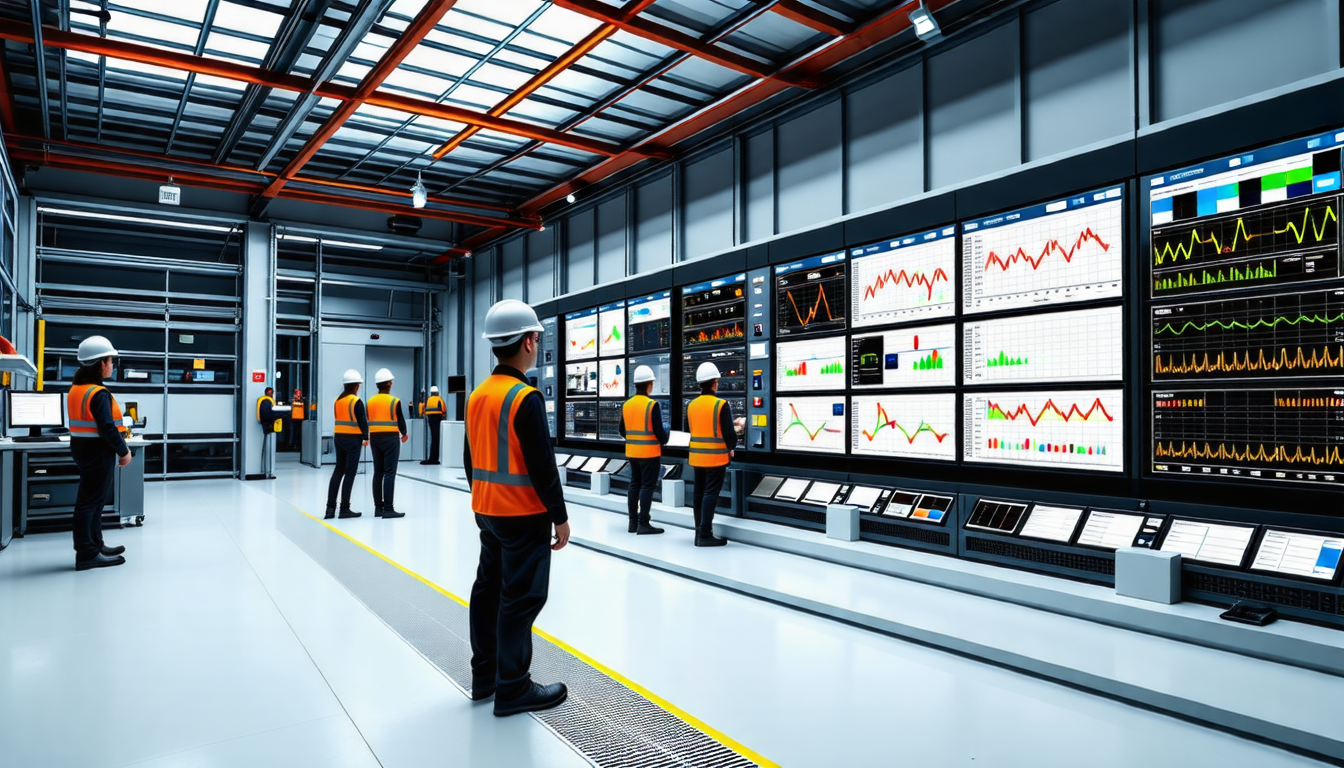|
IN BRIEF
|
Ensuring the safety of Mitsubishi Electric industrial systems is paramount for maintaining operational integrity and protecting personnel. The integration of advanced safety control devices and safety drive components plays a critical role in creating a cohesive safety framework. Key to this approach is the establishment of effective interlock circuits and the continuous monitoring of communication status between devices. Coupling control systems with safety protocols enhances the overall security posture, safeguarding both workforce and equipment. Mitsubishi Electric’s commitment to comprehensive safety management embodies meticulous risk assessments and robust design principles, ensuring that safety isn’t merely a goal but a fundamental aspect of the system. By leveraging technology such as the CIP Safety module and integrated inverter safety functions, organizations can effectively mitigate risks and foster a secure industrial environment.

Ensuring the safety of industrial systems is a priority in today’s manufacturing environments. Mitsubishi Electric presents a range of solutions designed to enhance safety protocols while maintaining efficiency. By integrating safety features into control systems and employing best practices in industrial environments, businesses can safeguard both personnel and equipment.
Understanding the Importance of Safety Guidelines
The foundation of a safe industrial environment lies in strict adherence to safety guidelines. Mitsubishi Electric emphasizes the necessity of defined protocols to mitigate risks associated with operational processes. These guidelines focus on ensuring the correct implementation of safety control devices, safety drive devices, and other essential components. Understanding the potential hazards within industrial settings is instrumental in creating effective safety measures.
Regular Risk Assessments
Implementing regular risk assessments is an essential step in identifying vulnerabilities within an industrial system. By evaluating potential risks, businesses can prepare appropriate countermeasures. Mitsubishi Electric’s safety management system provides a structured framework that includes comprehensive risk assessments to pinpoint areas of concern. This proactive approach allows for the development of strategies aimed at minimizing hazards and achieving safety compliance.
Integration of Safety and Control Systems
Integrating safety and control into a unified network enhances overall system efficiency. Mitsubishi Electric offers solutions that allow manufacturers to combine control systems with factory safety measures. This integration not only streamlines operations but also ensures that safety is not an afterthought. By deploying such systems, organizations can effectively protect their workforce, ongoing projects, and equipment from potential dangers.
The Role of Communication Status Information
Maintaining a clear understanding of communication status within an industrial system is crucial. Properly configuring an interlock circuit in the programming phase ensures safe operations. By regularly checking the communication status, companies can pinpoint system inconsistencies before they escalate into problems. This diligence can drastically reduce the chance of operational failures that jeopardize safety.
Implementing Safety Protocols in PLCs
Safety protocols must be embedded within Programmable Logic Controllers (PLCs) to enhance operational safety. Mitsubishi Electric facilitates this by enabling safety control modules to easily integrate with existing systems. For instance, the addition of safety relay modules onto Q series programmable controllers strengthens the safety framework and creates a seamless transition towards improved industrial safety practices.
Utilizing Advanced Inverter Technology
Mitsubishi Electric’s inverter technology also incorporates robust safety features, such as Safe Torque Off (STO) and Safe Stop 1 (SS1). These integrated functions work to prevent dangerous situations by halting operations when necessary. By adopting these technologies, industries can significantly enhance their safety measures and ensure uninterrupted safe operation of machinery.
Adhering to Legal Standards
Compliance with legal safety standards is non-negotiable in any industrial setting. Mitsubishi Electric’s offerings are designed to adhere to global safety regulations, ensuring that operations remain within legal frameworks. Consulting Occupational Safety and Health Administration (OSHA) guidelines can further solidify an organization’s commitment to compliance, minimizing the risk of legal repercussions.
Training and Development of Personnel
The effectiveness of safety systems is directly correlated to the competency of the workforce. Companies must invest in training programs that empower employees with knowledge about safety protocols and emergency procedures. Mitsubishi Electric encourages a culture of continuous learning, facilitating workshops and training sessions that emphasize the importance of safety in daily operations.
Investment in Advanced Safety Technologies
Investing in cutting-edge safety technologies can yield significant long-term benefits. Mitsubishi Electric offers various advanced safety solutions that enhance traditional safety measures. For example, deploying smart sensors can enable real-time monitoring of machinery and environmental conditions, ensuring timely alerts to potential hazards. Such innovations significantly enhance safety by enabling quick responses to unforeseen issues.
Regular Maintenance and Monitoring
Continuous maintenance is essential to ensure that safety devices function correctly. Companies must establish a regular schedule for inspecting equipment and safety mechanisms. Mitsubishi Electric advocates for a strict maintenance regimen to ensure longevity and operational integrity of critical safety features. Scheduled evaluations can detect early signs of wear, allowing for preemptive repairs or replacements before equipment failure occurs.
Utilizing Safety-Enabled Networks
Modern technologies allow for the creation of safety-enabled networks, enhancing communication between devices within an industrial environment. Mitsubishi Electric’s solutions promote the deployment of networks that not only connect machinery but also prioritize safety protocols. This interconnected system facilitates the swift relaying of vital safety information, ensuring all components are synchronized to mitigate risks effectively.
Employing Emergency Stop Systems
Emergency stop systems should be an integral part of any industrial safety plan. Mitsubishi Electric emphasizes the installation of readily accessible emergency stops that can halt operations immediately in case of an emergency. These systems must be strategically placed throughout the facility, allowing personnel to react swiftly in critical situations, thus enhancing overall safety.
Documentation and Reporting Practices
Maintaining clear documentation of safety procedures and incidents is crucial for continuous improvement. Companies should establish robust reporting practices that detail safety-related occurrences and their resolutions. Mitsubishi Electric encourages the use of documented procedures to analyze past incidents and adjust protocols accordingly, fostering a culture of learning and improvement.
Collaboration with Safety Experts
Engaging with safety experts can provide invaluable insights into refining safety measures. Collaborating with professionals who specialize in industrial safety can help identify best practices and cutting-edge technologies. Mitsubishi Electric’s commitment to partnering with experts ensures that organizations stay abreast of evolving safety trends and technologies, bolstering their overall safety strategy.
Focus on Human Factors
Understanding human factors in workplace safety is a key component of effective safety planning. Mitsubishi Electric stresses the importance of considering employee behavior and ergonomics when developing safety systems. Recognizing potential pitfalls and addressing them through design simplifies adherence to safety protocols, enhancing overall employee safety and satisfaction.
Continuous Improvement Practices
The journey towards a safer industrial environment is ongoing. Organizations should adopt a philosophy of continuous improvement, regularly reviewing and updating safety measures as new technologies and methodologies emerge. Mitsubishi Electric advocates for the assessment of existing systems to ascertain their effectiveness and discover areas for enhancement.
The Role of Technology in Enhancing Safety
Technology plays a critical role in modernizing safety practices within industrial systems. Mitsubishi Electric leads the charge with innovative technologies that not only improve safety but also optimize productivity. Functions such as predictive maintenance can preemptively identify potential failures, allowing for timely interventions that prevent incidents, ensuring a safer workplace.
Creating a Safety-Oriented Culture
A culture that prioritizes safety can significantly influence employee behavior and decision-making. Mitsubishi Electric promotes fostering a safety-oriented culture by making safety a core value in operations. Regular communication regarding safety priorities and the involvement of employees in safety discussions can enhance a shared commitment to safe practices.
Engagement and Feedback Loops
Establishing a reliable feedback loop is vital for implementing effective safety changes. Employees must feel encouraged to voice their concerns and suggestions regarding safety practices. Mitsubishi Electric advocates for open lines of communication where feedback can lead to meaningful safety adjustments. This participatory approach increases employee engagement and advocacy for safety protocols.
Promotion of Wellbeing in the Workplace
Lastly, prioritizing the overall wellbeing of employees contributes to a safer work environment. Mental and physical health plays a critical role in safety performance. Mitsubishi Electric encourages initiatives that focus on wellbeing, including stress management programs, ergonomic assessments, and health awareness activities. By supporting holistic employee wellbeing, organizations can foster a more vigilant and engaged workforce, ultimately enhancing safety in industrial systems.
For further insights into technologies that can enhance safety, including developments in optoelectronics, visit Mitsubishi Optoelectronics.
Ensuring the safety of Mitsubishi Electric industrial systems involves a multifaceted approach that integrates various key components. First, it is essential to implement a robust safety management system that encompasses thorough risk assessments and meticulous safety design. Utilizing advanced safety control devices and drive devices, along with configuring interlock circuits in programming, will greatly mitigate potential hazards. Integrating control and safety on the same network protects both personnel and equipment while enhancing operational efficiency. Additionally, leveraging technologies such as Safe Torque Off (STO) and Common Industrial Protocol (CIP) can further secure communication and system integrity.
Frequently Asked Questions about Ensuring Safety in Mitsubishi Electric Industrial Systems
What are the primary safety measures offered by Mitsubishi Electric? Mitsubishi Electric provides a comprehensive suite of safety control devices, safety drive devices, and essential safety components. These are designed to create a holistic safety solution that secures both personnel and equipment.
How can communication status support safety operations? It is crucial to check communication status information and configure an interlock circuit in the program. This approach ensures that the entire system operates within safe parameters.
What is the benefit of integrating control and safety systems? Integrating factory safety with factory control on the same network protects your workforce, work-in-progress, and overall equipment efficiency, unlocking hidden potential in your operations.
How is safety managed within Mitsubishi Electric systems? Mitsubishi Electric employs a multifaceted safety management system that includes detailed risk assessments and meticulous safety design processes.
Can safety control be added to existing systems? Yes, safety control can be seamlessly integrated into an existing Q series programmable controller by installing a safety relay module onto the Q base unit, enabling enhanced safety functionality.
What are the consequences of neglecting safety precautions? Ignoring the precautions specified under “CAUTION” may result in serious consequences, emphasizing the importance of strict adherence to safety guidelines.
How does the MELSEC iQ-R Series enhance safety? The MELSEC iQ-R Series CIP Safety module facilitates safe communication through CIP Safety (Common Industrial Protocol), ensuring the secure transmission of data alongside control commands.
What integrated safety functions are available in Mitsubishi Electric’s inverter technology? Mitsubishi Electric’s inverter technology includes Safe Torque Off (STO) and Safe Stop 1 (SS1), which are integral for enhancing operational safety in electrical systems.

Leave a Reply